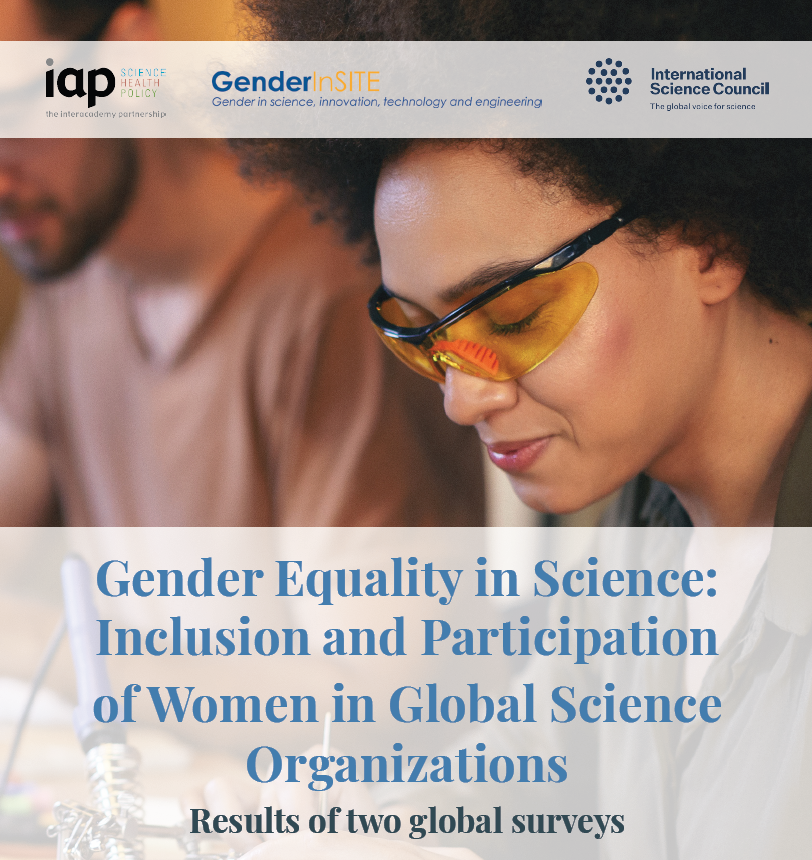
An important study that reports on the results of gender participation in science and engineering in academies that are members of the InterAcademy Partnership (IAP) and the International Science Council (ISC), as well as amongst international disciplinary unions and associations that are members of the ISC, was published in September 2021. The study was coordinated by GenderInSITE (Gender in Science, Innovation, Technology and Engineering), in collaboration with the IAP and ISC.
Gender in science, innovation, technology and engineering (GenderInSITE) is an international initiative to promote the role of women in science, innovation, technology and engineering. Its mission is to inspire transformative actions and more effective development by understanding the impacts of SITE on women and men and how women and men can contribute to SITE.
The InterAcademy Partnership (IAP), more than 140 national, regional and global member academies work together to support the vital role of science in seeking evidence-based solutions to the world’s most challenging problems.
The average share of women’s representation in 2020, across the same cohort of academies is 17%, (13% in 2015). 19 academies reported 10% or less women’s membership. Academies of young scientists have the largest shares of women members, with the South African Young Academy of Science in the first position (57%), followed by both the Young Academy Finland and the National Academy of Young Scientists of Pakistan in joint second position (55% each).
For each of nine broad disciplines, the mean share of women members ranges from as high as 28% (biological sciences) and 27% (social sciences, humanities and arts) to as low as 10% (engineering sciences) and 8% (mathematical sciences).
The average share of women serving on the governing body was 29% for the 85 academies in 2020 (21% in 2015). The National Academy of Sciences in the US (67%), together with Academia de Ciencias Físicas, Matemáticas y Naturales de Venezuela (67%) and the Global Young Academy (64%), have the highest representation of women serving on the governing body. This might be indicative of a concerted effort by some academies to involve more women in their governing body.
The survey made a number of recommendations, importantly to focus not just on the numbers but on the gender transformation of global science organizations in terms of institutional culture and knowledge to ensure that the needs and perspectives of women as well as men are considered and an approach that embraces the incorporation of a ‘gender lens’ in all activities.
The survey can be downloaded in this link.
The average share of women’s representation in 2020, across the same cohort of academies is 17% and was lowest at 10% for engineering sciences. The average share of women serving on the governing body was 29%, the highest proportions were among academies for young scientists.
DEC
2021
